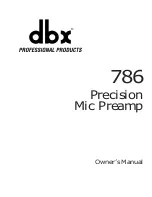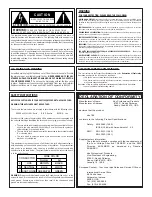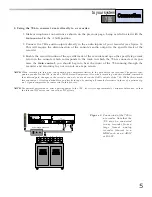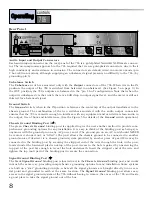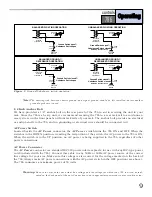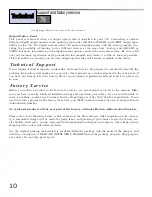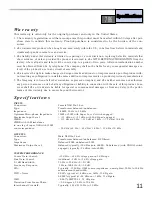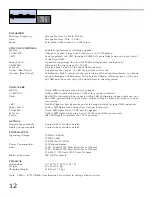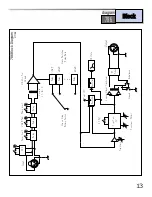
2. Using the 786 to connect a mic directly to a recorder.
1. Make microphone connections as shown on the previous page, being careful to start with the
Gain control
in the +15dB position.
2. Connect the 786’s audio outputs directly to the audio inputs of your recorder (see figure 3).
This will require the disconnection of the console’s audio output to the specific track of the
recorder.
4. Enable the record function of the specific track of the recorder and open the specific tape track
return in the console which corresponds to the track to which the 786 is connected. As you
raise the
Gain control
, you should begin to hear the input of the 786 running through the
recorder and returning to your console as a tape return.
NOTE:
When recording in this way, you should use a compressor/limiter in the path before the recorder. The perfect com-
panion product to the 786 is the dbx 160SL Stereo Compressor. Also, when recording with this method, remember
that desired gain changes to the recorder can only be made via the GAIN controls of the 786. While this is much
less convenient, it is often desirable to go directly to tape, bypassing all console electronics in favor of a pristine sig-
nal. A good compressor becomes vital to this process.
NOTE:
For optimal performance, after applying power to the 786 , let it sit for approximately 5 minutes before use, so that
the internal DC servos can cancel any DC offsets.
5
Connection
to your system
786
IN
OUT
Channel 1
MANUFACTURED UNDER THE FOLLOWING U.S. PATENTS:
4,368,425 5,282,252. OTHER PATENTS PENDING.
Power Supply, if required
Figure 3
: Connection of the 786 to
a recorder. Note that the
786 may be connected
to any recorder, from a
large format analog
recorder (shown) to a
MDM such as an ADAT
or DA-88.

